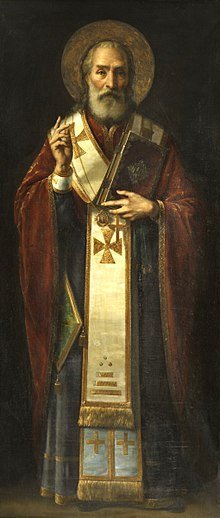 The True Saint Nicholas: “Like many good things, this story begins with a mother’s prayer.”
The True Saint Nicholas: “Like many good things, this story begins with a mother’s prayer.”
I downloaded The True Saint Nicholas on a whim as I was trying to accomplish my reading for A Literary Christmas challenge but I decided to read it for my Christian Greats challenge instead. Oh my, what a amazing book, a fascinating biography of this wonderful saint and his transformation into Santa Claus.
Raised in a prosperous family, Nicholas showed an early intelligence, growing up to become a priest and then experiencing an unexpected appointment as the bishop of Myra. Thus began the Great Persecution under Diocletian where Christians, being suspected as enemies of the empire, were imprisoned, thrown to lions, roasted alive or torn limb from limb. Churches were destroyed and scriptures burned. Galerius followed Diocletian with even stricter edicts, imprisioning and torturing Nicolas until the people became weary of bloodshed and Galerius reinstated Christian rights. Finally Constantine, after seeing a vision of the cross, conquered the empire and proclaimed freedom of religion whereupon Nicolas was eventually released. Both mental and physical destruction of church and families brought about by the Great Persecution was evident in Myra but Nicholas, buoyed by a new inner strength gained by his time in prison, supported people in a way that was nothing short of miraculous and “the doors of his house were open to all.” With his deep trust in God, Nicholas faced life’s challenges with a calm yet active faith which endeared him to all people. Tradition says he was one of the bishops who attended the Council of Nicea which gave us the Nicene Creed, slapping the face of the priest, Arius, who was spreading heresy. He was detained for his troubles but later released. Our good saint spent the rest of his life in Myra, serving the people and in his later years, his greatest joy were the children who came to him. In 340, Nicholas fell ill and died on what is now his feast day, December 6th. He was buried in a marble tomb in the city’s cathedral.

